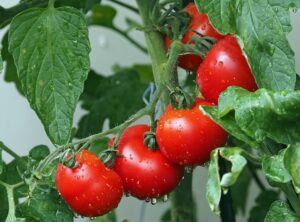Welcome to the world of vining tomatoes – a staple in many gardens and a favorite among home gardening enthusiasts and sustainable living advocates alike. In this comprehensive guide, we’ll explore everything you need to know about vining tomatoes, from the benefits of growing them to the best practices for ensuring a bountiful harvest.
Introduction to Vining Tomatoes
Vining tomatoes, also known as indeterminate tomatoes, are varieties that grow in a trailing or climbing habit and continue producing fruit throughout the growing season until the first frost. This characteristic makes them an ideal choice for home gardeners looking to maximize their yield from a limited space.
Benefits of Growing Vining Tomatoes
Growing vining tomatoes offers several advantages. They are space-savers, as they can be trained to grow vertically with the support of stakes or trellises. This upward growth also promotes air circulation, reducing the risk of diseases. Additionally, many gardeners find that vining tomatoes tend to produce fruit with more complex flavors compared to their bush-type counterparts.
Types of Vining Tomatoes
Slicing Vines
- Brandywine: A popular heirloom variety known for its large, flavorful fruits. Brandywine tomatoes require staking and benefit from regular pruning to manage their vigorous growth.
- Cherokee Purple: Another heirloom favorite, Cherokee Purple tomatoes boast a unique, deep purple-red color and a rich, smoky flavor. They thrive in warm conditions and need plenty of sunlight.
Cherry Vines
- Sweet 100: True to their name, Sweet 100 tomatoes are a cherry variety known for their exceptionally sweet flavor. They produce long clusters of fruit and can be prolific producers when given adequate support and nutrients.
- Sun Gold: Sun Gold tomatoes are prized for their bright, tangerine-colored fruits and tropical, fruity taste. They’re fast growers and can quickly fill a trellis with vibrant color.
Heirloom Vines
Heirloom vining tomatoes are treasured for their unique flavors and histories. Varieties such as Green Zebra, with its striking green stripes, and Amish Paste, excellent for sauces and canning, offer a glimpse into the rich biodiversity of tomatoes. Growing heirlooms supports genetic diversity and sustainable gardening practices.
Roma Vines
Roma tomatoes, also known as plum tomatoes, are renowned for their thick, meaty flesh and fewer seeds, making them an ideal choice for sauces, pastes, and canning. Unlike the varieties discussed earlier, Roma tomatoes are determinate in nature, meaning they grow to a fixed height and produce all their fruit at once. However, there are vining, or indeterminate, varieties of Roma tomatoes that continue to grow and produce fruit throughout the growing season, offering the benefits of continuous harvests. These vining Romas require similar care to other vining tomatoes, including staking or trellising for support and ample sunlight to develop their rich, full flavor.
Differences Between Indeterminate and Determinate Tomatoes
Indeterminate Tomatoes (Vining Tomatoes):
- Continue to grow and produce fruit throughout the growing season until killed by frost.
- Require significant support for their vines, as they can grow very tall.
- Ideal for gardeners looking for a steady supply of tomatoes rather than a single harvest.
Determinate Tomatoes (Bush Tomatoes):
- Grow to a compact height and stop growing when fruit sets on the top bud.
- All the fruit ripens roughly at the same time over a period of 1-2 weeks.
- Requires less support; suitable for container gardening or small spaces.
- Best for gardeners who prefer to harvest all at once for canning or making sauce.
Growing Techniques and Tips
Supports and Pruning
Choosing the right support system is crucial for vining tomatoes. Sturdy stakes, cages, or trellises will keep plants upright and promote healthy growth. Pruning, particularly the removal of suckers that form in the leaf axils, can improve air circulation and fruit quality.
Watering and Fertilizing
Consistent watering is key to preventing issues such as blossom end rot. Drip irrigation systems can deliver water directly to the roots, reducing waste and disease risks. A balanced fertilizer, applied according to package instructions, will support healthy growth and fruiting.
Pests and Diseases
Common pests include tomato hornworms and aphids, while diseases such as blight and powdery mildew can be managed through proper spacing, rotation, and choosing disease-resistant varieties.
Harvesting and Storage
Vining tomatoes are best harvested when they’ve reached their full color but are still firm to the touch. To maintain freshness and flavor, store tomatoes at room temperature away from direct sunlight.
Conclusion
Vining tomatoes are a versatile and rewarding choice for any gardener looking to enjoy fresh, flavorful tomatoes throughout the season. By selecting the right varieties and following best practices for care and maintenance, you can enjoy a successful harvest that brings the taste of summer to your table.
We encourage you to explore the diverse world of vining tomatoes and share your gardening experiences with the community. Your contributions help inspire and educate fellow gardening enthusiasts on the joys and benefits of growing these remarkable plants.

